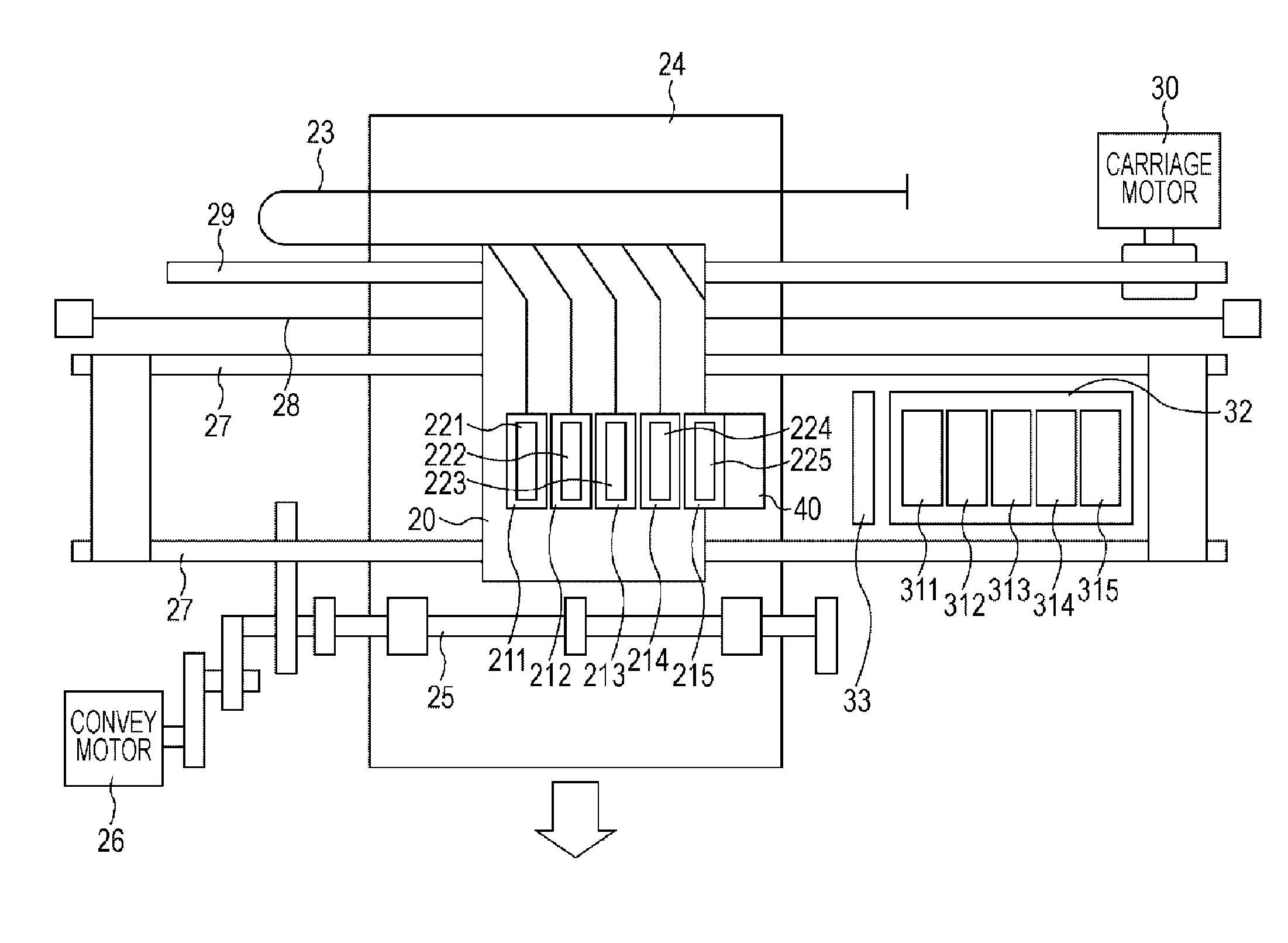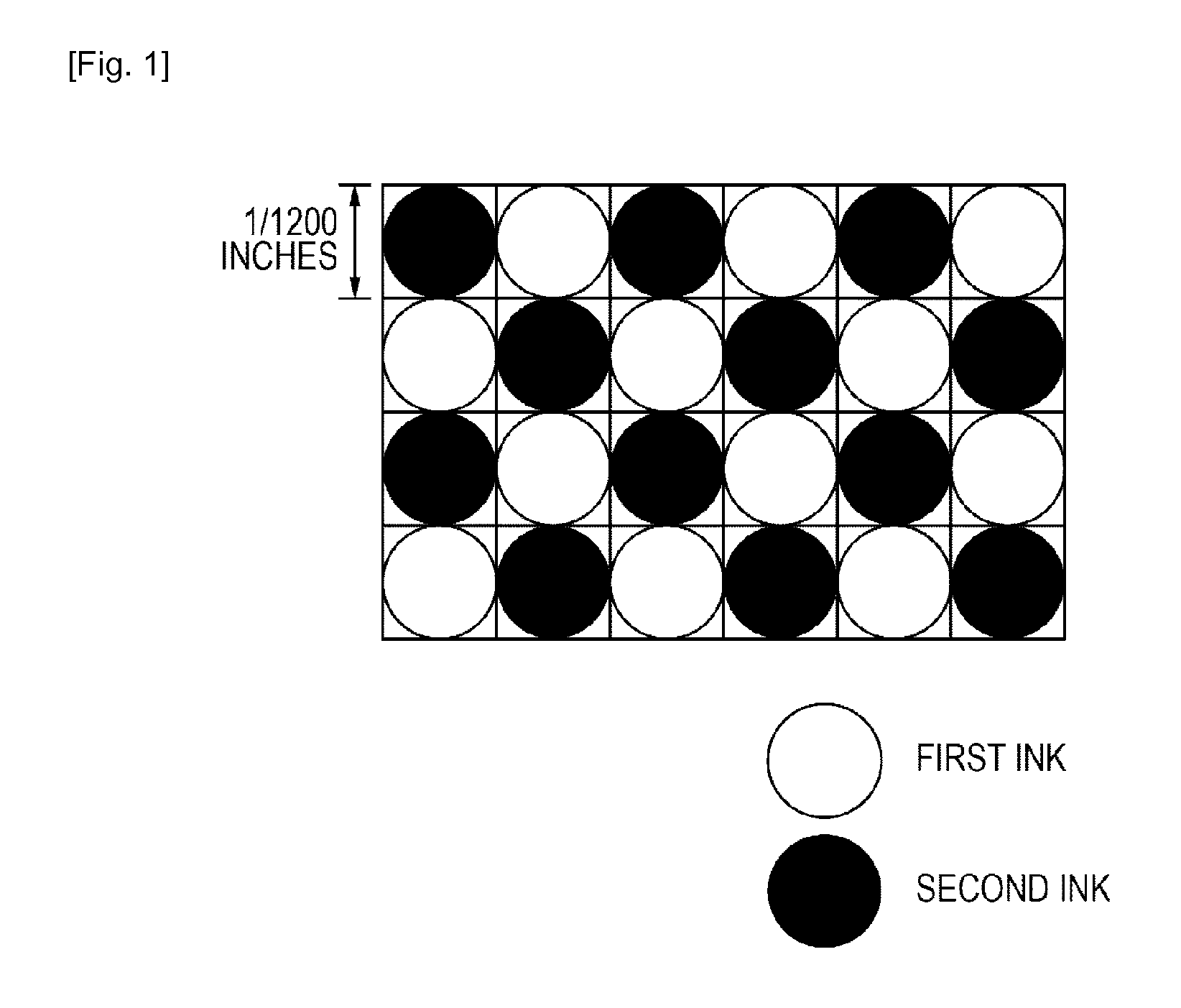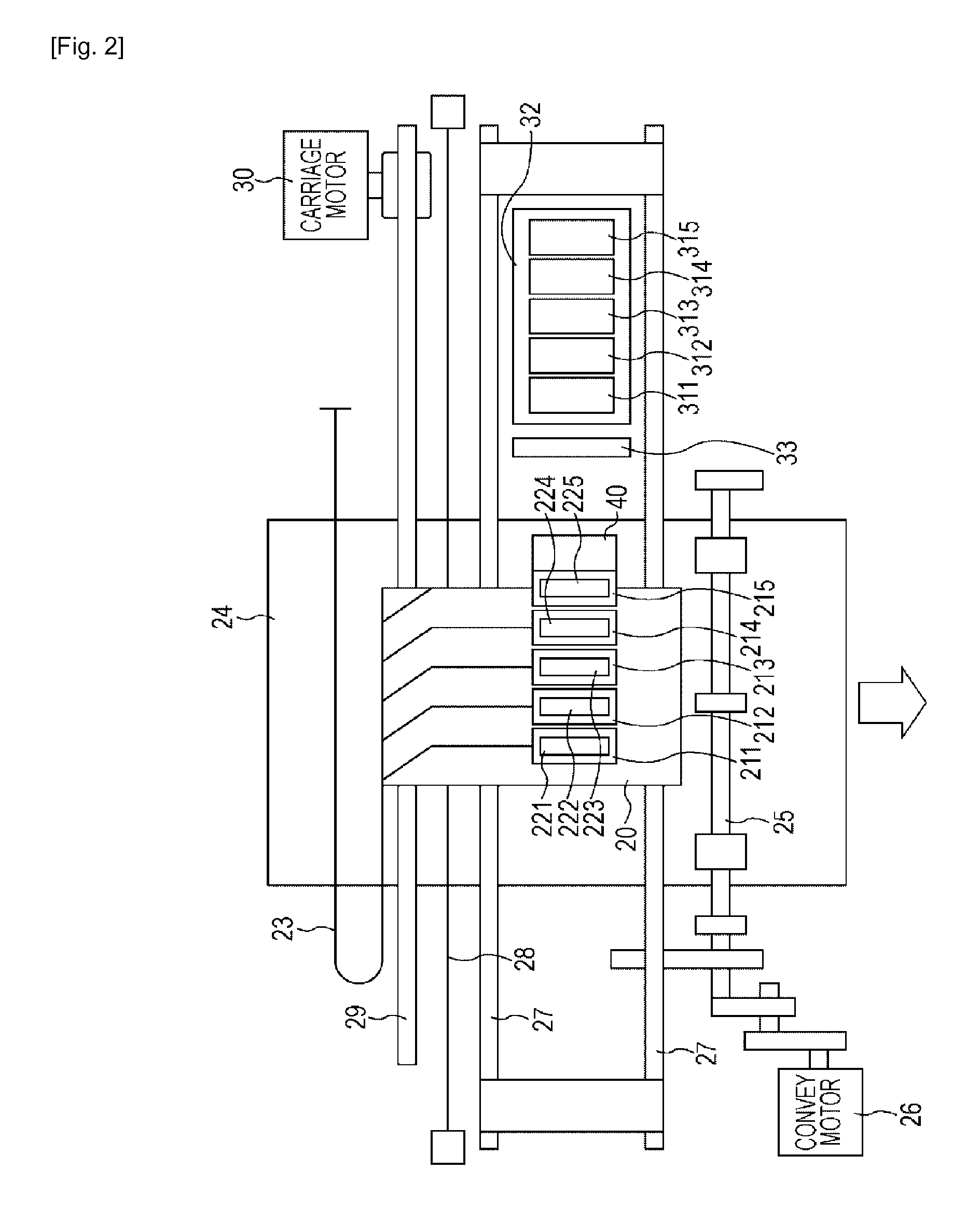Ink jet printing ink
a technology of printing ink and jet printing, which is applied in the direction of printing, coating, and inks, can solve the problems of insufficient dispersion stability and difficulty in fusion of resin particles, and achieve the effect of high fastness and stably ejecting
- Summary
- Abstract
- Description
- Claims
- Application Information
AI Technical Summary
Benefits of technology
Problems solved by technology
Method used
Image
Examples
examples
[0072]The present invention will be further described in the following examples and comparative examples. Unless otherwise specified, parts are based on mass. The average particle size was measured with Nanotrac UPA150EX (manufactured by Nikkiso Co., Ltd., the 50% integrated value of the volume-average particle size). The acid value of resin particles was measured in the aqueous dispersion with a Titrino potentiometric titrator (manufactured by Metrohm AG). The glass transition temperature was measured with DSC822 (manufactured by Mettler-Toledo International Inc.). The weight-average molecular weight was measured with HLC-8220GPC (manufactured by Tosoh Co.).
Production of Self-Dispersing Pigment A
[0073]10 g of carbon black having a specific surface area of 320 m2 / g and a DBP absorption of 110 ml / 100 g and 3.2 g of 4-aminobenzenephosphonic acid were sufficiently mixed in 70 g of water. 1.62 g of nitric acid was added dropwise to the mixture and was stirred at 70 degrees Celsius. Afte...
PUM
| Property | Measurement | Unit |
|---|---|---|
| glass transition temperature | aaaaa | aaaaa |
| glass transition temperature | aaaaa | aaaaa |
| particle size | aaaaa | aaaaa |
Abstract
Description
Claims
Application Information
 Login to View More
Login to View More - R&D
- Intellectual Property
- Life Sciences
- Materials
- Tech Scout
- Unparalleled Data Quality
- Higher Quality Content
- 60% Fewer Hallucinations
Browse by: Latest US Patents, China's latest patents, Technical Efficacy Thesaurus, Application Domain, Technology Topic, Popular Technical Reports.
© 2025 PatSnap. All rights reserved.Legal|Privacy policy|Modern Slavery Act Transparency Statement|Sitemap|About US| Contact US: help@patsnap.com



